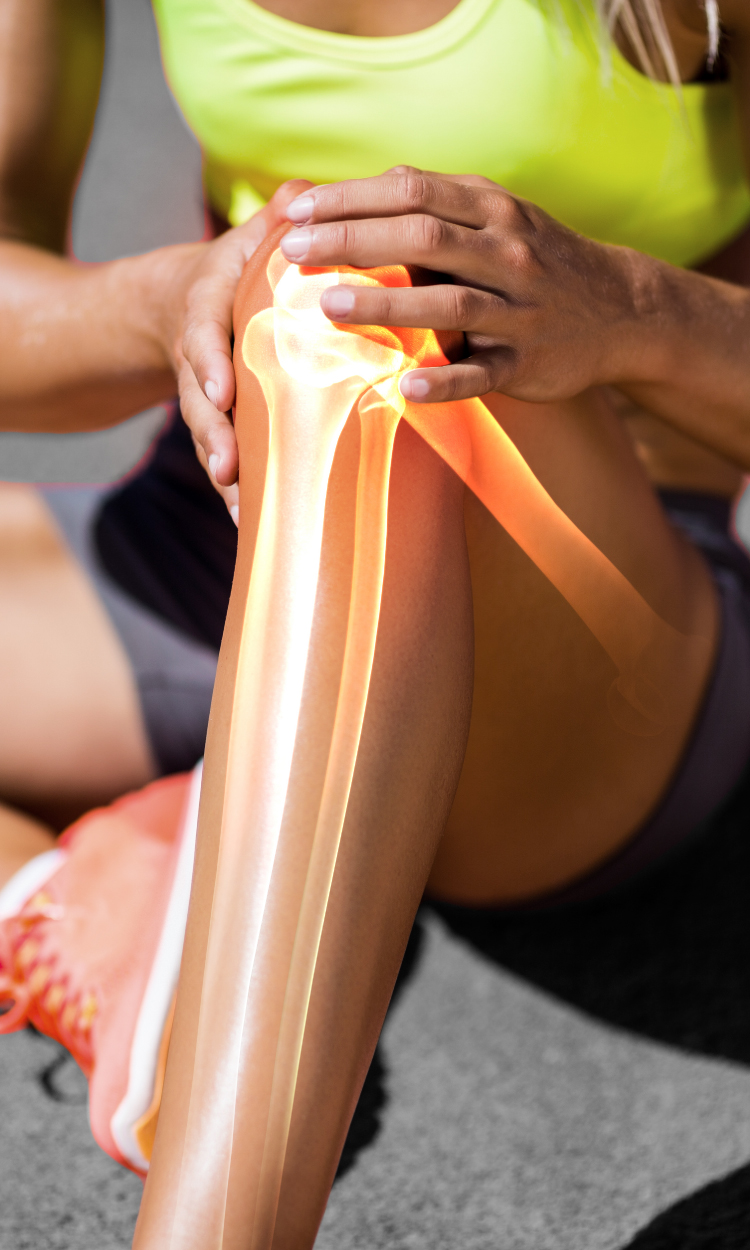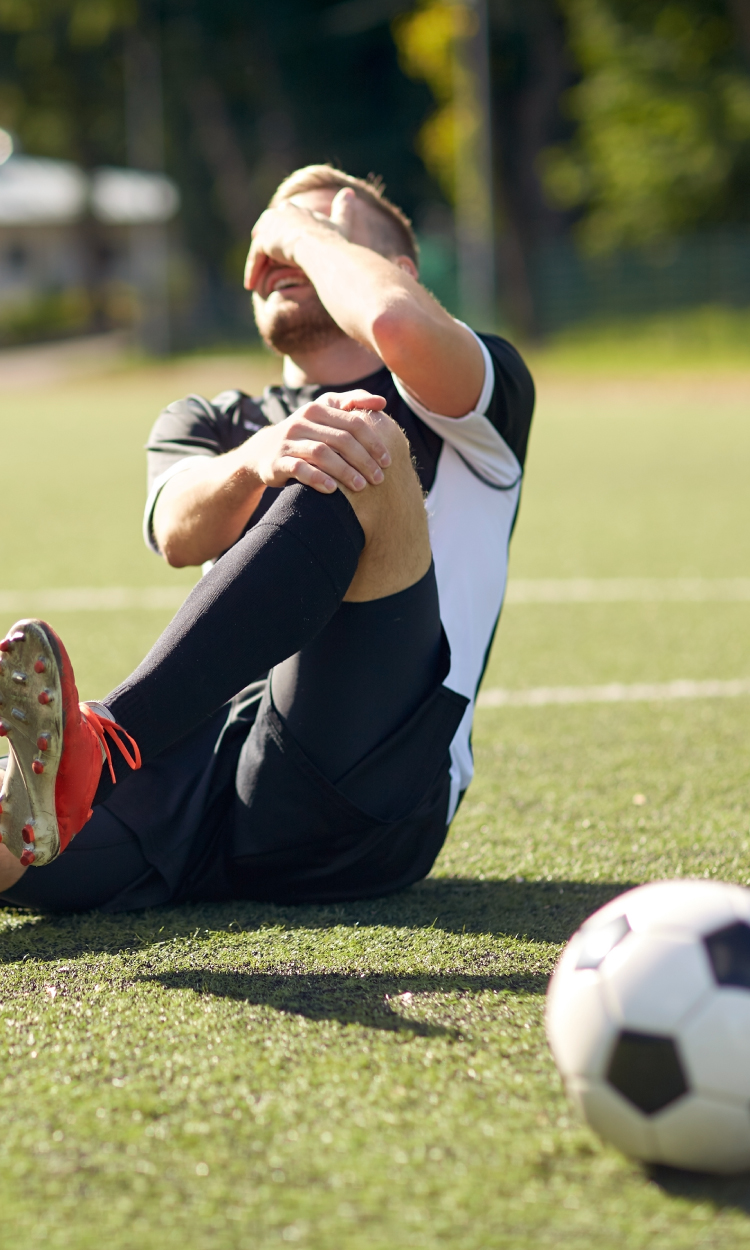Athletic Injuries
Sports injuries can occur when playing indoor or outdoor sports or while exercising. Sports injuries can result from accidents, inadequate training, improper use of protective devices, or insufficient stretching or warm-up exercises. The most common sports injuries are sprains and strains, fractures, and dislocations.
ACL & Ligament Tears
Injuries to the Anterior Cruciate Ligament (ACL) in the knee are common. ACL injuries occur most often in people who participate in high impact sports like tennis, basketball, football, skiing and soccer, which requires abrupt changes in direction. Injuries occur when the athlete plants the foot to change direction and the knee buckles. In contact sports, the injury results from being clipped from behind. In skiing, the ACL tears when the ski catches in the snow or twists the leg.
Symptoms
- You may hear a popping sound when the knee gives out.
- There will be pain and swelling within 24 hours of the injury, which may resolve on its own. But, any attempt to return to sports with instability increases risk of more damage to the knee.
- Loss of range of motion
- Tenderness at the joint
- Discomfort while walking

Nonsurgical Management for Partial Tears
Conservative treatment includes rest, anti-inflammatory medications and activity modification. Once the swelling resolves, pain and dysfunction can be treated successfully with physical therapy. A torn ACL will not heal without surgery. Nonsurgical management can be successful for patients with partial tears and no instability and children in whom the growth plates are still open
When knee stability is good, your doctor may recommend a hinged knee brace to protect against instability. You may need to use crutches to avoid putting weight on the leg. Physical therapy will restore function and strengthen the leg muscles.
When conservative management is unsuccessful, and there is recurrent knee buckling, ACL reconstruction may be the best option to restore full function and allow the patient to return to an active life.
ACL Reconstruction Surgery
The goal of surgery is to create a stable knee and allow patients to return to their chosen sports. The torn ligament will be replaced with a tendon tissue graft. The graft tissue may be obtained from the patient’s own ligament tissue (an autograft), or from a cadaver (an allograft). It takes about 6 months before an athlete can return to sports.
The surgery begins with an arthroscopic exam of the knee to verify the tear and check for other tissue that may require repair, such as other knee ligaments. Once a complete diagnosis has been made, the surgeon will proceed to replace the torn ACL ligament. This is minimally invasive surgery accomplished with a few small incisions, less pain, less joint stiffness, and has a shorter recovery time to allow the patient to return to sports.
Rehabilitation with physical therapy is critical for a successful outcome, and often begins immediately after surgery.
A patient may return to sports when there is no pain or swelling, full range of motion and muscle strength have been restored, and endurance and function have been fully restored. Balance will be restored through specific exercises.
Meniscus Tears
The meniscus is a shock-absorbing pad of cartilage in the knee that lubricates, supports and protects the bones in the knee joint. There are two menisci in the knee, one on the inner edge and the other on the outer edge of the knee. They function to stabilize the knee, equally distribute one’s weight on the knee bones for balance and allow for smooth movement in many directions. A meniscus tear occurs when there is a tear or damage to menisci cartilage. A tear can lead to catching and locking of the knee during movement.
Meniscus tears most often result from an athletic injury and/or aging, which causes the cartilage to dry out and become brittle. Tears are usually a direct result of twisting or over flexing the knee joint. A tear can also result from heavy lifting.
Symptoms
- Knee pain
- Swelling and stiffness
- Limited motion
- A sensation that the knee is giving way
- A sense of the knee catching or locking, which means the knee is unstable.

Nonsurgical Treatment
Tears that are small and on the outer edge of the meniscus may heal on their own. The initial use of the RICE treatment method is effective for many meniscus tears. The RICE method consists of: Rest, Ice, Compression, and Elevation. Aspirin and NSAIDs will also help reduce pain.
If the symptoms resolve and the knee is stable, nonsurgical treatment may be sufficient. However, if symptoms persist, injection therapy is another treatment option. Injection therapy consists of a cortisone injection to reduce inflammation. Injection therapy may be especially helpful for degenerative tears in arthritic patients.
If symptoms persist after the aforementioned treatments, arthroscopic surgery may be the most effective option.
Knee Arthroscopy
This is a commonly performed procedure to repair a tear, trim and remove the torn and loose pieces in the joint, or remove the entire meniscus. Meniscus repair is a delicate surgery that sutures the tear and anchors the meniscus in place. Recovery from this procedure is longer than in a meniscectomy. Often a meniscus tear occurs with an injury to the ACL ligament. In this case, the surgery will repair the ligament and the meniscus.
In arthroscopic surgery a small, thin tube that contains a camera is inserted into the knee joint to examine and repair the meniscus. Small tools are inserted into small incisions for repair. This less invasive surgery will limit damage from the procedure and help promote complete recovery. It is usually done in an outpatient surgery center under general or local anesthesia.
